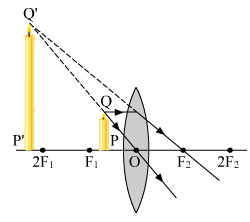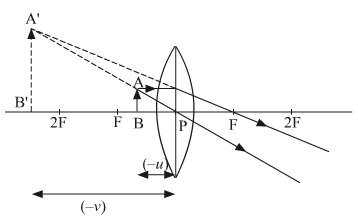 Long Answer Type
Long Answer Typea) Give a chemical test to distinguish between saturated and unsaturated hydrocarbon.
b) Name the products formed when ethane burns in the air. Write a balanced chemical equation for the reaction showing the types of energies liberated.
c) Why is the reaction between methane and chlorine in the presence of sunlight considered a substitution reaction?
(a) Define the following terms in the context of spherical mirrors:
i) Pole
ii) Centre of curvature
iii) Principal axis
iv) Principal focus
b) Draw ray diagrams to show the principal focus of a
i) concave mirror
ii) convex mirror
c) Consider the following diagram in which M is a mirror and P is an object and Q is its magnified image formed by the mirror.

a)
When an object is placed in front of the lens between its optical centre and principal focus, the image is formed beyond 2F1 (on the same side of the object), and the ray diagram is obtained is as follows:
 b)
b) 




(a) Write the functions of the following parts in human female reproductive system:
(i) Ovary
(ii) Oviduct
(iii) Uterus
(b) Describe the structure and function of placenta.
What is meant by speciation? List four factors that could lead to speciation. Which of them cannot be a major factor in the speciation of a self pollinating plant species. Give reason to justify your answer.
